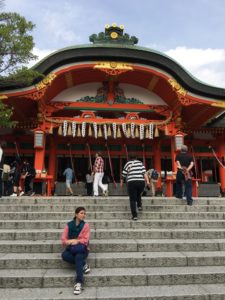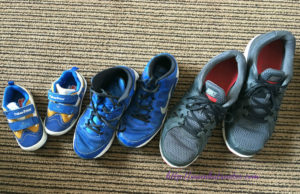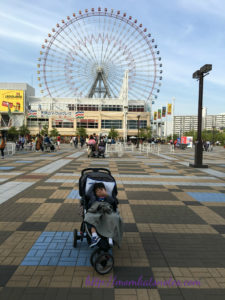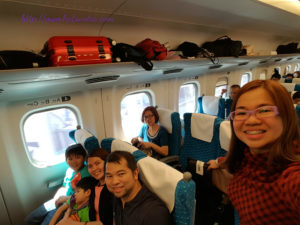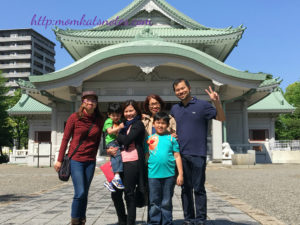We had been receiving a lot of inquiries about Japan and travelling in general. Today I will answer the frequently asked questions (FAQs) by you guys! But please note that all my answers are just base on my personal experiences. I do not claim to be an expert traveler nor claims to know Japan really well.
I want to start planning for our trip but I don’t know where to begin. Help!
Whenever we plan for our trip, the first thing that we always settle is the date. Our availability is usually when there is a long school break or vacation because we do not want Heinel to miss a lot of days in school. Then of course there is also Daddy S’ schedule at work just so that it will not coincide with any deadline or event. Once the date is settled, then everything else follows.
Once the date is settled, check the season of your intended country at the time of your visit. Is it winter? Summer? Spring? Check also the suggested best seasons to visit that country from blogs and trip websites, to make the most out of your trip especially if you will be travelling with kids.
Then once you have finalized the travel date and the country destination, then you can go about researching for the visa requirements (if any).
How do we go about getting a visa to Japan?
Getting a tourist visa for Japan from the Philippines has to be done through accredited travel agencies. You can check out Japan embassy’s list of accredited agencies here (travel agents) and find the one nearest you. Processing takes about 3-5 days. Just make sure to comply with the necessary documents . If you are unsure about the validity of your documents, you can have it checked by the agency. There is no need for the personal appearance of everyone in the group getting a visa. There were 6 of us travelling to Japan but I am the only one who submitted everything to the agency.
Tourist visa validity is usually just 60 or 90 days thus, it is not advisable to apply more than two months before your target date so as not to reach expiry while you are travelling.
How do I go about planning our itinerary?
For most first timers in Japan, booking a tour is the most convenient way of exploring each city. You will experience going to the famous tourist spots without taking the public transport.
However, if like us, you want the flexibility of time and pace, and thus foregoes city tours, the internet is a helpful tool in planning for your trip. In my case, Tripadvisor and several family travelling blogs proved to be very helpful. Our entire 8 day trip was a result of months of searching and reading through these blogs.
Whenever I plan an itinerary for a family trip, the priority is always the kids; their endurance and enjoyment are our major goal. Thus, it means that (1) our days are not packed with activities and sites to visit. If we are scheduled to go to amusement parks like Disneyland or Universal studios, I give it an entire day. Or if we visit tourist spots like parks and temples, I usually just schedule 2-3 sites for a day. If they turn out to be up for more, I have a bonus location that we can visit; and (2) we make sure to go to kid friendly attractions and tourist spots. Our aim is always for our kids to have fun so more often than not, cultural tourist spots as well as shopping are not a priority in our trips.
In planning for your itinerary, do not forget to include the transportation details of going to and from locations. If you will be taking the subway and buses, always take note of the stations in which the tourist spots are most located. In Japan, most famous tourist spots are near a subway station so that it is an added relief to us tourist.
Check out also the dates of your travel if it coincides with holidays. Holidays tend to be crowded on amusement parks and major tourist attractions as Japanese people themselves love to go around. If your travel dates fall on any of the holidays, try to reschedule trips to amusement parks, zoos and other popular sites on other days.
Are airfare and hotels to Japan expensive?
A common concern for those who wants to travel to Japan is the cost of airline tickets. Nowadays there are a lot of seat sales that you can avail from several airlines. Some websites also help you book affordable tickets like Tripadvisor and www.cheapflights.com.ph, and more. What is good about these travel websites is that they provide reviews and ratings on the service of these airlines thus giving you an idea of what to expect once you booked your flights with them. Since it is just a four-hour long flight to Japan, you may forego purchase of meals for extra savings.
The same thing applies for hotels. Nowadays, the popularity of airbnb are bypassing those of hotels because it is cheaper. You can check out www.airbnb.com for available home or condo rentals in your travel location. Whatever your preferred accommodation is, just make sure that you check out reviews of their services. Your hotel need not be located in the center of the city. Just book ones that are near subway stations for a more convenient travel.
As you book your flights and hotels, please take note of your Japan visa approval and validity. It is generally not advisable to book your airfare and hotel without a visa yet, but some choose to take the risks because of the seat sale. It is really up to you if you want to book your flights early on.
How much Yen should I bring to our trip?
This really depends on the places that you will visit. Tokyo is a more modern city, thus credit cards are widely used. However, for Osaka and Kyoto, there are several stores that only accepts cash, especially those little souvenir stores, so make sure that you bring enough.
Now, in terms of having your local currencies converted to Yen, check with your local money changer or bank at least two weeks before your flight for Yen availability. Here in the Philippines, Yen has to be ordered in advance before they can sell it to you. Best to have it reserved because exchange rates in the airport are way higher than outside rate
If you are planning to take a bullet train and intends to have some of your luggage shipped, your hotel can assist you with that but they will only accept payment in cash so make sure to include that in your budget.
Is internet connection while we travel really necessary?
Having an internet connection in Japan proved to be very helpful for us. We were able to download subway apps needed to make our travels more convenient. Googlemaps became a very good friend as it provided directions either thru public transport, or by walking. Whenever we are asking for directions, we just usually show photos of our destination so it will be easier for Japanese people to understand us.
If you will be travelling with a group, like us who are 4 adults, a wifi will be advisable. Travel agencies offer pocket wi-fi rentals for a fee, amount of which depends on the number of days you will be using the internet. Just inform the agency a few weeks before your trip since they still need to register your wifi usage. These pocket wifi can connect several users at a time and valid across all cities in Japan once activated.
If you will be travelling alone or with a buddy, you may opt to avail of the roaming data package offered by your local cellphone provider. This may be cheaper compared to renting a pocket wifi. If travelling in pairs, one can avail of the roaming data while the other will just connect via personal hotspot so you will only avail of one roaming data package.
Is it easy to move around Japan when I have kids, and thus will bring a stroller to everywhere?
Subway is the most common way of travelling in Japan. Subway lines are interconnected for the convenience of the passengers. There are also bus lines available. Taxis are expensive so if you can avoid taking it, pls do so. For more convenient way to travel, you can buy travel card or pass which you can load and good for 24 hours. These travel cards can be used in buses and subways.
Aside from taking the subway, there will be a lot of walking in Japan. Make sure to wear comfortable footwear which can be with you for several days.
If you have kids and intends to bring stollers, or PWDs with a wheelchair, subways in Japan are PWD and stroller friendly. There are elevators especially designed to accommodate wheelchairs. Inside the subway are designated areas as well for them.
In terms of tourist sites, Tokyo and Osaka are both PWD friendly. There are several ramps available for them. Special assistance is given for PWD tourists for their convenience. I am actually very impressed with their level of service towards us.
As most tourist spots in Kyoto are temples, travelling with a stroller and wheelchairs can be a challenge. There are limited gliding areas for wheelchairs. Most of the temples are built with several steps thus, it may be hard to navigate going around these temples.
How was your bullet train experience? Is it necessary that we take it going from Tokyo to Osaka or vice versa?
From Tokyo to Osaka, we took the bullet train. This is fastest and most convenient way to travel as it is just a two hour and a half ride. However, it is quite costly. One way ticket to Osaka from Tokyo costs about P6,000+. Aside from ticket costs, one also has to spend for shipping of luggage. Only one cabin size luggage is allowed in bullet trains so if you have big luggage you have no choice but to have it shipped to hotel in your next city destination. Our shipment of one large luggage from Tokyo to Osaka costs us about P2,000 to P3,000.
If budget is a concern, others may opt to take a regular train but it will take you several hours to get to either Osaka or Kyoto. There are also flights from Tokyo to Osaka but such can be costly too.
How was your experience with the Japanese people? Is it difficult to communicate with them because of the language differences?
Japanese people are generally helpful and sensitive ones. They will go out of their way to help you out as much as they can. Japan is tourist friendly because of their hospitable people.
If there is one thing that can hinder communication, it is because of language barrier. Not many Japanese are familiar with English, and if they are, sometimes the pronunciation can be a factor too. But that will not stop them from helping you. They will try, i tell you, their very best to assist you.
Before going to Japan, it is best to know some basic Japanese terms. You will find these very useful as you interact with them during your whole stay in Japan:
Good morning – Ohayo Gozamas
Hello – Kon’nichiwa
Excuse me – Sumimasen
Goodbye – Sayonara
Thank you – arigatou guzaimasu
Subway – Chikatetsu
Toilet – toire
Elevator – ereba-taa
Do you speak English? – Eigo o hanasemasu ka
I understand – Wakarimasu
I don’t understand – Wakarimasen
How is the weather during your trip?
Weather depends on the season that you visited Japan. During our vacation, it was late Spring early summer. Thus, the weather is between 15C to 25C. Mornings and evenings are cold. Mid day is sunny but not humid. Make sure to bring weather appropriate clothes so you will be comfortable all throughout your trip.
As whether in Japan can be erratic, always check the weather thru the weather app (another reason why you need that internet connection) to know if you will be needing an umbrella or get into a comfy pair of shorts. During our 8-day trip we experienced a sunny day Thursday, and a very rainy day Friday! There was no hint at all on Thursday that it is going to rain that hard the next day!
So far the questions above are the FAQs that we receive. Do you have more? Feel free to ask them away by commenting below.
With proper planning, a family vacation, no matter where, are is a good way to spend time with family and learn new things. I always believed in the positive benefits of travelling with children as this widens their horizon and understanding of the world.


